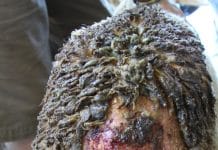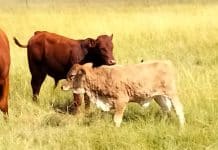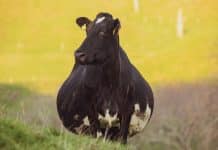The poultry industry is generally comprised of broiler chicken production, egg production, day-old chick suppliers and other poultry. While micro-enterprise businesses are gaining prominence as a means to address the challenges of job creation, economic growth and equity, the industry has future challenges concerning poultry litter management.
Considering the emerging trends of increased growth in this subsector, the environmental impact of poultry litter requires some close monitoring. Our fundamental premise is that the industry focus needs to shift away from direct use of poultry litter as a fertiliser, due to the high quantities of nitrogen (N), phosphorus (P), and potassium (K) that would accumulate in agricultural soils.
Energy generation
Recently, environmentalists raised concerns over the impact of poultry litter dumping in terms of odour, emissions, stormwater release, as well as dust particles.

Waste is an unavoidable by-product of the poultry economy and it is the responsibility of individuals and entities such as co-operatives, to utilise litter for further economic value such as deploying renewable generation technologies for a more sustainable and efficient economy.
To date, biogas and electricity are the most common forms of energy generated from any of the waste-to-energy processes. Anaerobic digestion, thus far, is the technology of choice for the conversion of poultry litter and other waste into bioenergy and bioproducts such as biofertilisers.
A challenge for the digestion of poultry litter, has been the need to add a large amount of water to digesters as a means to adjust the litter to a total solid (TS) concentration of under 15%, as the TS concentration of poultry litter is approximately 70%.
Transitioning from the dumping of poultry litter to repurposing it, is unavoidable and will require careful selection of technology. All of the existing technologies require a certain amount of investment. Therefore, should a farmer choose anaerobic digestion or thermochemical conversion options, its feasibility and justification need to be very strong.
Figure1 illustrates the different pathways a poultry farmer can choose to convert poultry waste to energy and other value-added products like biogas. Outputs are primarily biomethane, biofertilisers, bio-oil, syngas, and biochar, which may be recycled or catalytically converted into further commodities such as hydrocarbons, chemicals, gasoline, diesel and BioCNG.
Figure 1: Example of chicken enterprise showing energy, nutrient and revenue flows of the production system.

Compositional analysis of poultry litter
The major constituents of poultry litter include bedding material, feathers, manure and wasted feed. The compositional characteristics of poultry litter is important to know, as it informs the farmer of a number of important physical properties such as moisture content, total (dry) solids, volatile solids, ash, and fixed carbon.
In addition, analysis of litter content can also reveal other compounds which are primarily protein, fat, non-structural sugars and fibres, whereas some poultry litter contains predominately cellulose (due to presence of the spent feed and bedding content).
This analysis usually signals an awareness relating to different types of potential and related products derivable from these building blocks in waste materials. Alternatively, where testing is not possible for various reasons, data from pre-existing studies can be utilised to provide insight and for estimations.
Low TS-waste
The effects of using poultry litter in a digester as a feedstock in the overall anaerobic bioconversion on a conventional laboratory scale or a large scale, require low solids systems. These digesters allow for the addition of significant volumes of water to bring the nominal organic loading rate to between 4 and 12% TS and a retention time of 30 to 40 days.
Continuous stirred tank reactors (CSTRs) are the most common digester configurations for this anaerobic treatment and mixing the digested material throughout the process is vital. Efficient mixing helps with mass transfer between the active microbial biomass and the litter.
High TS-waste
High solids anaerobic digestion offers a lot of benefits, including smaller reactor sizing, lower heating, minimal mixing requirements, and decreased process water treatment. Plug-flow anaerobic reactors (PFRs) are characterised by a minimal or no-mixing system and operate at high TS concentrations, which limit their applicability to several kinds of manure.
PFR is known to offer flow through the reactor, with no element of fluid overtaking or mixing with any other element ahead of or behind it. PFR systems are usually simple, economical, and attractive in terms of efficiency and overall bioconversion compared to CSTR.
Heavy metal analysis
Evaluating the presence of metals (heavy metals) in poultry litter using an approved toxicity characteristic leaching procedure, is highly recommended. For example, metal concentrations are normally determined by atomic adsorption spectrophotometry.
Although heavy metals are naturally present in soil, geological and anthropogenic activities increase the concentration of these elements to levels that are harmful to both plants and animals. Due to the addition of various metals to poultry diets to facilitate weight increase and disease prevention, poultry litter generally contains intense amounts of heavy metals. Hence, applying poultry litter to large areas of land would result in heavy metal accumulation, which will pose potential environmental risks to the soil, surface and groundwater.
Biogas potential
Initial anaerobic digestibility assessments can and should be conducted with poultry litter, employing the traditional biological methane potential (BMP) protocol which uses a low solids digester adapted to an inoculum from an existing anaerobic digester. BMP tests have been used to characterise a wide variety of feedstock for biogas production and have become an important tool for investigating possible pre- and post-anaerobic digestion options.
It uses computer models and mathematical expressions that describe the anaerobic digestion process. Hence the information from BMP experiments has been found to produce reasonable predictions of full-scale anaerobic digester behaviour. Therefore, it is of particular importance to define methane potential for a given solid feedstock such as poultry litter and other vital parameters such as the design and economic details of a biogas plant.
Ultimate analysis
An ultimate analysis of poultry litter will provide the elemental composition of major elements such as carbon, oxygen, hydrogen, nitrogen, phosphorus and sulphur in the sample. Several researchers have correlated their findings based on carbon and hydrogen contents of waste, to estimate heating value (HV). Heating value, also known as calorific value, is a measurement of the energy content in the waste.
Two HV types can be found in waste samples, namely higher heating value (HHV) and lower heating value (LHV). The HHV is the total amount of heat available in waste, including the latent heat of water vaporisation in the waste sample, while the LHV does not include the latent heat of vaporisation of water. In case a farmer wanted to burn litter for energy in the presence of oxygen inside a sealed container, the heat released from the combustion of poultry litter, is predicted by the HV.
Hydrothermal liquefaction
Hydrothermal liquefaction (HTL), also referred to as hydro-pyrolysis, is a thermochemical conversion process in which high temperatures and pressures are used to decompose complex organic material, including livestock waste. HTL is a thermochemical conversion process similar to pyrolysis, gasification or combustion, all of which use heat to chemically decompose organic material into various products, like biogas.
Many of the studies that have evaluated HTL performances over several years, suggest increased product yield as a result of poultry litter use over time. According to the South African Poultry Association (SAPA), provinces such as Mpumalanga, North West and the Eastern Cape are predominantly broiler production areas (SAPA, 2017), and poultry litter from these farming areas could be managed through HTL processes. biogas
Laboratory-scale pilot plants and commercial operations have shown several interesting products including Syngas (a mixture of water, hydrogen, carbon monoxide, carbon dioxide, nitrogen, and hydrocarbon gases), bio-oil (a highly oxygenated condensation product of synthesis gas), bio-char (a solid residual of thermochemical conversion), and water effluent (a nutrient-dense material that has NPK with potential as a biofertiliser).
– Dr Idan Chiyanzu and Primrose Magama, ARC-Agricultural Engineering
More information on the various system developments as well as training, is available on the ARC website at www.arc.agric.za. Contact Dr Idan Chiyanzu at email chiyanzui@arc.agric.za or Primrose Magama at email magamap@arc.agric.za.







